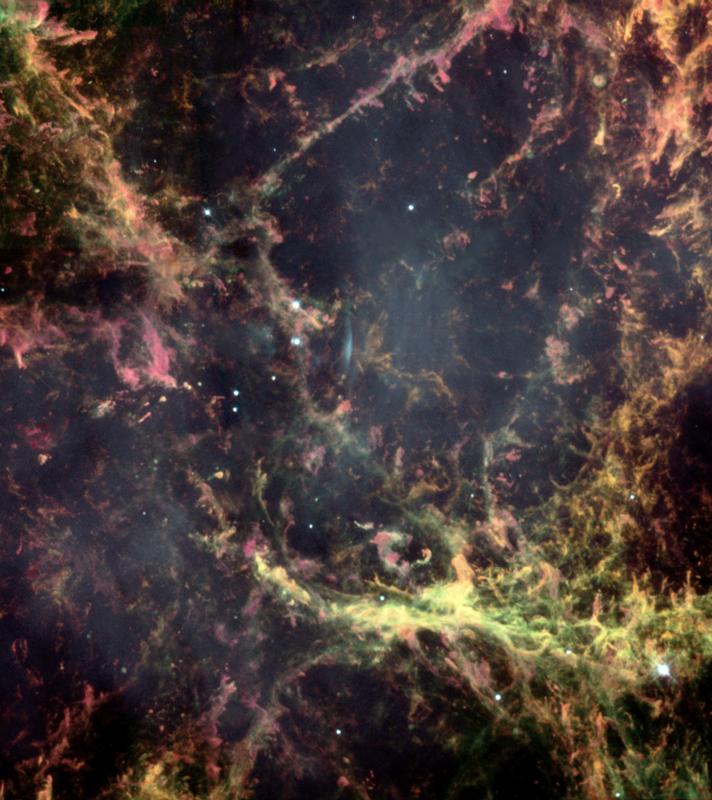The Crab Nebula Seen in 3-Dimensions
By Andy Tomaswick
The Crab Nebula is arguably one of the most famous objects in the night sky. It was delineated as M1 in Messier’s famous catalogue. It is the remnants of a supernova that was actually visible in day time almost 1000 years ago. And its remnants have been astonishing both professional and amateur astronomers ever since.
Now thanks to modern technology, we can get an updated view of this iconic supernova remnant. Researchers from a variety of institutions, led by Thomas Martin from the Universite Laval, have created a three dimensional image of the nebula for the first time ever.
Credit: Thomas Martin, Danny Milisavljevic and Laurent Drissen
This is important for more reasons than just having a cool new picture to look at. Pictures, including the 3D kind, contain data, and that data can be used to better understand the object that is the subject of the picture. A long running debate has centered around what kind of star the nebula originally was. Astronomers have long inferred that the core of the star was made up of oxygen, neon, and magnesium. However, they found a structure in the heart of the nebula that might call that composition into question.
There is a honeycomb structure remarkably similar to the shape of a actual human heart in the center of the nebula. In models of “electron capture” supernovae, such as the one thought to have caused the Crab Nebula, it is highly unlikely that such a structure would have formed.

Credit: Wikipedia user Torres997
So far there hasn’t been a plausible alternative to what the actual composition might have been. But if there’s one thing that scientists will need to answer that question, it is data. And the data collected by the team led by Dr. Martin has lots of it to go around.
They leveraged the SITELLE spectrometer, which is a part of the Canada-Hawaii-France Telescope located in Hawai’i (where it recently snowed). With this highly precise instrument, the team was able to collect 300,000 spectra over the entirety of the nebula.

Credit: NASA / Hubble Heritage Team / STScI / AURA / W. P. Blair (JHU)
SITELLE has collected data on plenty of other comparable supernovas as well, as that is specifically what it is designed to do. One additional interesting discovery from this preliminary data analysis is that the ejecta in at least two major supernova remnants form a large scale ring structure, which is also present in the Crab Nebula.
All this imagery of rings and hearts make an appropriate backdrop for the upcoming Valentine’s Day holiday. Maybe as more data is collected, an image of one of the most famous night sky objects could end up on Valentine’s cards in the not-to-distant future.
Learn More:
Royal Astronomical Society: Spectacular ‘honeycomb heart’ revealed in iconic stellar explosion
RAS: 3D mapping of the Crab Nebula with SITELLE – I. Deconvolution and kinematic reconstruction
UT: Gamma rays detected coming from the Crab Nebula
Hubblesite.org: Peering into the Heart of the Crab Nebula
Lead Image:
Crab Nebula shown at two different angles – the right is from Earth, while the left better shows the shape of the “heart” at the center of the nebula.
Credit: Thomas Martin, Danny Milisavljevic, and Laurent Drissen
The post The Crab Nebula Seen in 3-Dimensions appeared first on Universe Today.

February 12, 2021 at 05:46PM
via Universe Today read more...

Post a Comment